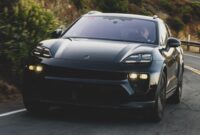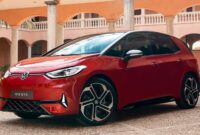The Stellantis EV offensive continues in Europe where the Opel Astra will be offered for the first time in 32 years running without a combustion engine. Mechanically related to the Peugeot E-308 launched in September, the electric compact car will also come in hatchback and wagon body styles similar to its French cousin. Based on a platform developed for ICE powered cars, EVs look pretty much the same as petrol and diesel.
Rüsselsheim’s Peeps says the Astra Sports Tourer Electric is the German marque’s first zero-emissions car, though Porsche will be begging to differ since the Taycan Cross / Sport Turismo model is also a long-roof EV. Much like the Peugeot E-308, the silent Astra is front-wheel drive only with a single electric motor. It produces an identical 156 horsepower (115 kilowatts), but torque rises a staggering 10 Newton-meters (7 pound-feet) to 270 Nm (199 lb-ft).

12 Photo
The difference in Opel’s favor continues as the electric Astra can travel 416 kilometers (258 mi) on a full charge while the E-308 has the same 400 km (248.5 mi) per WLTP cycle. Both models share the same 54 kWh battery pack with a usable capacity of 51 kWh. It takes about half an hour to charge the battery to 80 percent when charging from a 100 kW DC station.
Opel points out that while “many other electric cars” have a top speed limited to 150 km/h (93 mph) or 160 km/h (99 mph), its Astra EV duo tops out at 170 km/h (106 mph). ). In terms of practicality, this wagon is capable of swallowing 516 liters behind the rear seats and 1,553 liters when folded. As expected, its volume is much lower than that of the ICE-powered engine (608 liters and 1634 liters respectively).
Going on sale next spring, the pure electric Astra complements the top-of-the-range GSe version, a plug-in hybrid model with 225 hp (165 kW) and 360 Nm (265 lb-ft) of torque. The Grand Sport Electric also comes in both body styles and you can also have a PHEV setup on the equivalent version of the Peugeot 308.
With many new EVs on the horizon, Stellantis effectively signals the beginning of the end of its ICE in Europe where all of its brands will sell electric cars only by 2030.



